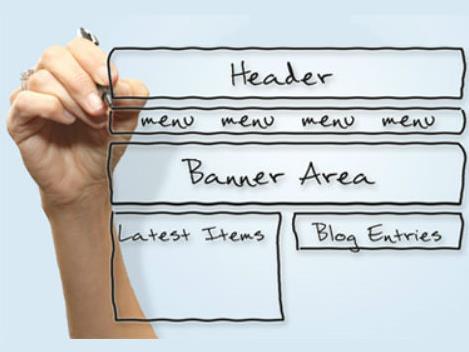Design for effect: Image: Simon’s Blog Park
Your web site is your face to the world. Most people, when they hear about you, will immediately go to your web site to check you out. Today, it’s very likely that they will visit your web site from their mobile phone, while they are out and about.
The aim of all your digital marketing, especially your social media activity, is to eventually bring people to your web site, get them on your email list (because then you own the data, not Facebook or LinkedIn) and eventually get them to buy from you (or take whatever action you need them to take).
If your web site isn’t inviting, professional-looking and doesn’t have clear calls to action, then all of those digital marketing activities are really wasted because it is unlikely that people who visit your site will do what you want the to.
If your web site is static and hasn’t been updated for several years, then there is a good chance you are losing potential customers.
Do You Need A New Web Site?
You should seriously consider creating a new web site if your current web site:
- Looks bad on mobile devices, especially smart-phones (since more people access the web via mobile than desktop now)
- Doesn’t let you easily add your own content (since search engines love new content)
- Doesn’t allow people to interact with you (since people want to interact)
- Doesn’t let people buy from you Key Considerations For Your New Web Site
Once you decide that you need a new web site, you need to think about your platform and design
Website Platforms
Unless you have a compelling reason to build a web site from scratch (and very) few arts organisations have such a reason), use an open-source Content Management System (CMS) to build your web site one.
A CMS is a platform designed to allow non-programmers add, edit and remove content from their web site quickly and easily.
Open-source means that the software that the CMS (or other software) is built on can be accessed and edited by any programmer. When open-source platforms become popular, there are thousands of software developers around the world who work with them and can make updates to them.
Using a CMS means that the vast majority of the functionality you need is built in and generally available for free. The most popular open-source CMS platforms are WordPress, Joomla and Drupal. These each have strengths and weaknesses but all have hundreds of “plug in” modules that add extra functionality (many are free, most are inexpensive) and large developer communities, so you can have custom work and development done if you need it. Other key benefits of open-source CMS platforms are:
- The software is free
- They are easy and fast to set up
- It’s quick and easy to change the look of the site with templates (also lots of free ones available)
- You can create and publish your own content easily
- They are set up for search engines to index easily, so they are good for helping people find you
Just make sure that the person who sets up your CMS knows about security and sets things up in a secure way so that you are less likely to get hacked.
Design Considerations
When you create your web site brief, keep some contemporary design considerations in mind:
- Make sure your site is responsive (adapts automatically to screen size) or that you have a mobile version
- Modern design is open, with lots of white space and visuals
- Make sure it’s easy to incorporate video
- Make sure you have thought about how you allow people to interact with you
- Header (or hero) images are very popular. If you have compelling images, put them at the top so they capture attention
- Include strong calls to action so that people know what you want them to do





